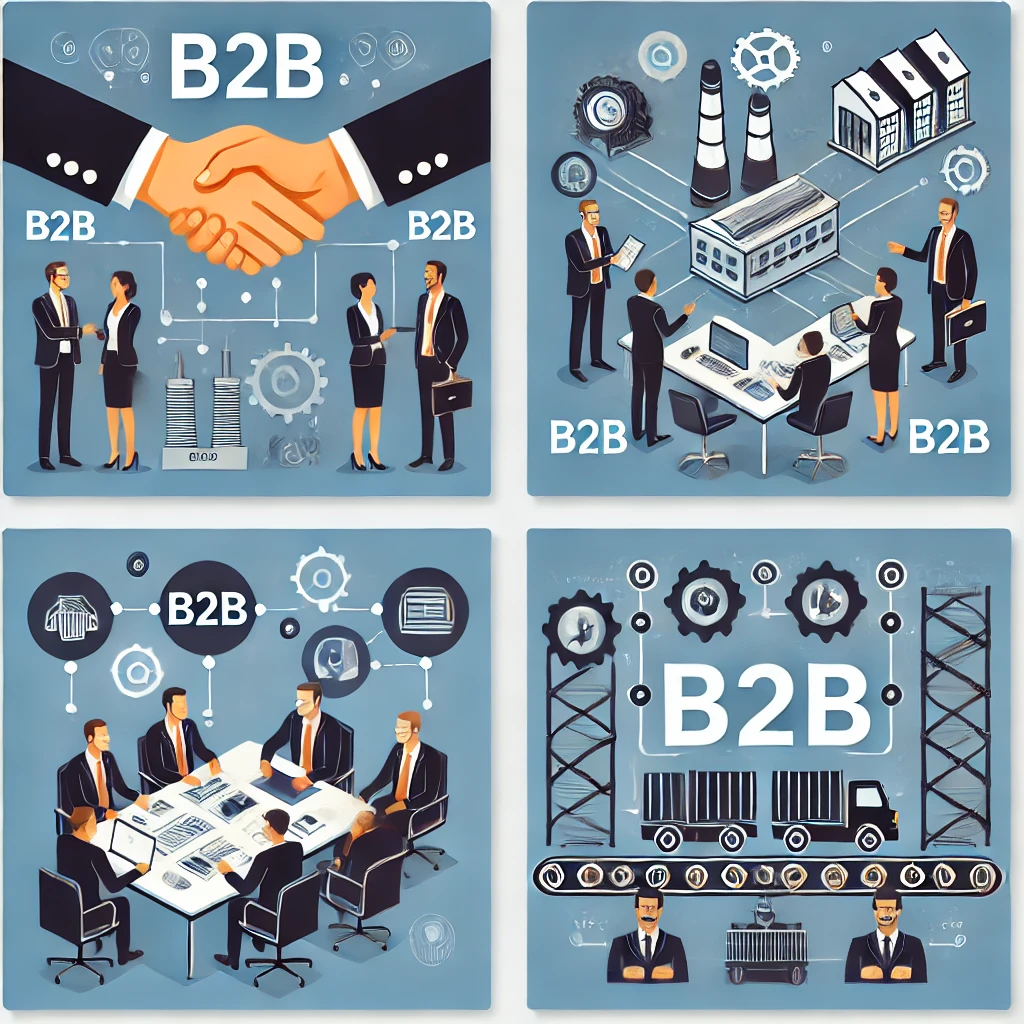In the rapidly evolving landscape of B2B marketing, demand generation has emerged as a cornerstone for achieving sustained business growth. With the advent of advanced digital marketing techniques and the increasing dominance of connected TV advertising, companies have unprecedented opportunities to engage and convert their target audiences. This article explores effective B2B demand generation strategies, emphasizing the critical role of innovative advertising solutions and performance marketing tactics.

Understanding B2B Demand Generation
B2B demand generation encompasses a variety of marketing activities aimed at creating awareness and interest in a company’s products or services among potential customers. Unlike lead generation, which focuses on capturing contact information, demand generation aims to build and nurture long-term relationships, ultimately leading to increased sales and customer loyalty. It requires a comprehensive approach that integrates multiple marketing channels and tactics to engage prospects at various stages of the buyer’s journey.
Key Components of B2B Demand Generation
1. Content Marketing
Content marketing is the backbone of any successful demand generation strategy. High-quality, relevant content can establish your company as a thought leader and trusted resource in your industry. Effective content marketing not only attracts potential customers but also educates them, addressing their pain points and guiding them toward making informed purchasing decisions.
- Blog Posts and Articles: Regularly publishing insightful articles helps attract and engage your target audience. These articles should address industry trends, common challenges, and innovative solutions, positioning your company as an expert in the field.
- Whitepapers and E-books: In-depth guides on industry-specific topics can capture the attention of decision-makers. Offering these valuable resources in exchange for contact information can also aid in building a qualified lead database.
- Webinars and Videos: Interactive and visual content can effectively convey complex information and engage potential clients. Webinars, in particular, provide an opportunity for real-time interaction with your audience, fostering deeper connections and trust.
2. Account-Based Marketing (ABM)
ABM is a highly targeted approach where marketing efforts are directed toward specific accounts rather than a broad audience. This strategy is particularly effective in B2B contexts, where the sales cycle is longer, and the decision-making process involves multiple stakeholders. ABM allows for a more personalized and relevant marketing experience, increasing the likelihood of conversion.
- Personalized Campaigns: Tailoring your marketing messages to address the unique needs of each target account can significantly increase engagement. Personalization can be achieved through detailed research on the account’s business challenges, goals, and decision-makers.
- Multi-Channel Outreach: Leveraging various channels, such as email, social media, and connected TV advertising, ensures your message reaches the right audience. Coordinating these efforts across channels can provide a cohesive and consistent brand experience.
3. Data-Driven Marketing
Leveraging data analytics is crucial for understanding your audience’s behavior and optimizing your demand generation efforts. Data-driven marketing allows for more informed decision-making and better allocation of resources, ultimately improving campaign effectiveness and ROI.
- Customer Segmentation: Analyzing customer data helps in segmenting your audience based on demographics, behavior, and preferences. This segmentation enables more targeted and relevant marketing messages.
- Predictive Analytics: Using historical data to predict future trends can inform your marketing strategies and improve ROI. Predictive analytics can help identify which prospects are most likely to convert, allowing you to prioritize your efforts accordingly.
Harnessing the Power of Connected TV Advertising
Connected TV (CTV) advertising has revolutionized the way B2B marketers reach their audiences. Unlike traditional TV advertising, CTV offers precise targeting and measurable results, making it an invaluable tool for demand generation.
Benefits of Connected TV Advertising
- Enhanced Targeting: CTV allows for granular targeting based on demographics, interests, and viewing habits, ensuring your ads reach the most relevant audience. This level of precision minimizes wasted ad spend and maximizes the impact of your campaigns.
- Interactive Content: Unlike traditional TV, CTV supports interactive ad formats, enabling viewers to engage directly with your content. Interactive ads can include features such as clickable elements, allowing viewers to learn more about your offerings or even make a purchase.
- Measurable Outcomes: CTV advertising platforms provide detailed analytics, helping you measure the effectiveness of your campaigns and optimize them in real-time. Metrics such as view-through rates, engagement rates, and conversion rates provide valuable insights into campaign performance.
Integrating CTV with Other Marketing Channels
For maximum impact, CTV advertising should be integrated with other digital marketing channels. A cohesive, multi-channel approach ensures that your message is reinforced across various touchpoints, increasing the likelihood of conversion.
- Programmatic Advertising: Automated, real-time bidding for ad placements can extend the reach of your CTV campaigns across multiple platforms. Programmatic advertising ensures that your ads are displayed to the right audience at the right time, optimizing your ad spend.
- Social Media: Using social media to promote your CTV content can amplify its reach and engagement. Social media platforms provide additional targeting options and can drive traffic to your CTV content.
- Email Marketing: Incorporating CTV ads in your email campaigns can enhance their appeal and effectiveness. Including video snippets or links to your CTV content in emails can increase click-through rates and engagement.
Implementing Effective Performance Marketing
Performance marketing focuses on measurable results, such as clicks, conversions, and sales. This approach is highly effective in B2B demand gen, as it aligns marketing efforts with business objectives. Performance marketing ensures that your marketing spend directly contributes to your bottom line, providing a clear ROI.
Key Performance Marketing Strategies
- Pay-Per-Click (PPC) Advertising: PPC campaigns on search engines and social media platforms can drive targeted traffic to your website. These campaigns allow you to bid on specific keywords and only pay when a user clicks on your ad, ensuring cost-effectiveness.
- Search Engine Optimization (SEO): Optimizing your website for search engines improves its visibility and attracts organic traffic. Effective SEO involves optimizing on-page elements, creating high-quality content, and building backlinks to improve your site’s authority.
- Affiliate Marketing: Partnering with industry influencers and affiliates can expand your reach and generate high-quality leads. Affiliates promote your products or services in exchange for a commission on any sales they generate, providing a cost-effective way to reach new audiences.
Nurturing Leads through Effective Follow-Up
Generating leads is only half the battle; nurturing them is equally important. Effective follow-up strategies ensure that potential customers move smoothly through the sales funnel, increasing the likelihood of conversion.
Strategies for Lead Nurturing
- Automated Email Campaigns: Personalized, automated email sequences can keep your leads engaged and informed. These campaigns can be triggered by specific actions or behaviors, ensuring timely and relevant communication.
- Content Drip Campaigns: Gradually providing valuable content helps build trust and keeps your brand top-of-mind. Drip campaigns can deliver a series of related content pieces over time, guiding leads through the buyer’s journey.
- Retargeting Ads: Using retargeting ads, particularly on CTV platforms, can remind leads of your offerings and encourage them to take action. Retargeting ensures that your ads are seen by users who have already shown interest in your products or services, increasing the likelihood of conversion.
Measuring and Optimizing Demand Generation Efforts
Continuous measurement and optimization are crucial for the success of your demand generation strategies. Regularly evaluating your campaigns allows you to identify what’s working and what’s not, making necessary adjustments to improve performance.
Key Metrics to Track
- Conversion Rate: The percentage of leads that convert into customers. This metric indicates the effectiveness of your marketing efforts in driving sales.
- Cost Per Lead (CPL): The cost associated with acquiring a new lead. Monitoring CPL helps ensure that your marketing spend is efficient and sustainable.
- Customer Lifetime Value (CLV): The total revenue a customer generates over their relationship with your company. CLV provides insight into the long-term value of your customers and can inform customer retention strategies.
Optimization Techniques
- A/B Testing: Regularly testing different versions of your ads and content can help identify what resonates best with your audience. A/B testing involves comparing two variations to determine which performs better, allowing for data-driven decision-making.
- Feedback Loops: Collecting and analyzing feedback from your leads and customers can provide valuable insights for improving your strategies. Surveys, reviews, and direct feedback can highlight areas for improvement and inform future campaigns.
- Real-Time Adjustments: Leveraging data analytics to make real-time adjustments ensures your campaigns remain effective and efficient. Real-time data allows you to respond quickly to changing market conditions and audience behavior.

Conclusion
In the dynamic world of B2B marketing, effective demand generation requires a strategic approach that combines content marketing, ABM, data-driven insights, and innovative advertising techniques like connected TV advertising. By integrating these elements and continuously measuring and optimizing your efforts, you can create a robust demand generation strategy that drives sustained business growth. Embrace these strategies to stay ahead in the competitive landscape and build lasting relationships with your target audience.

